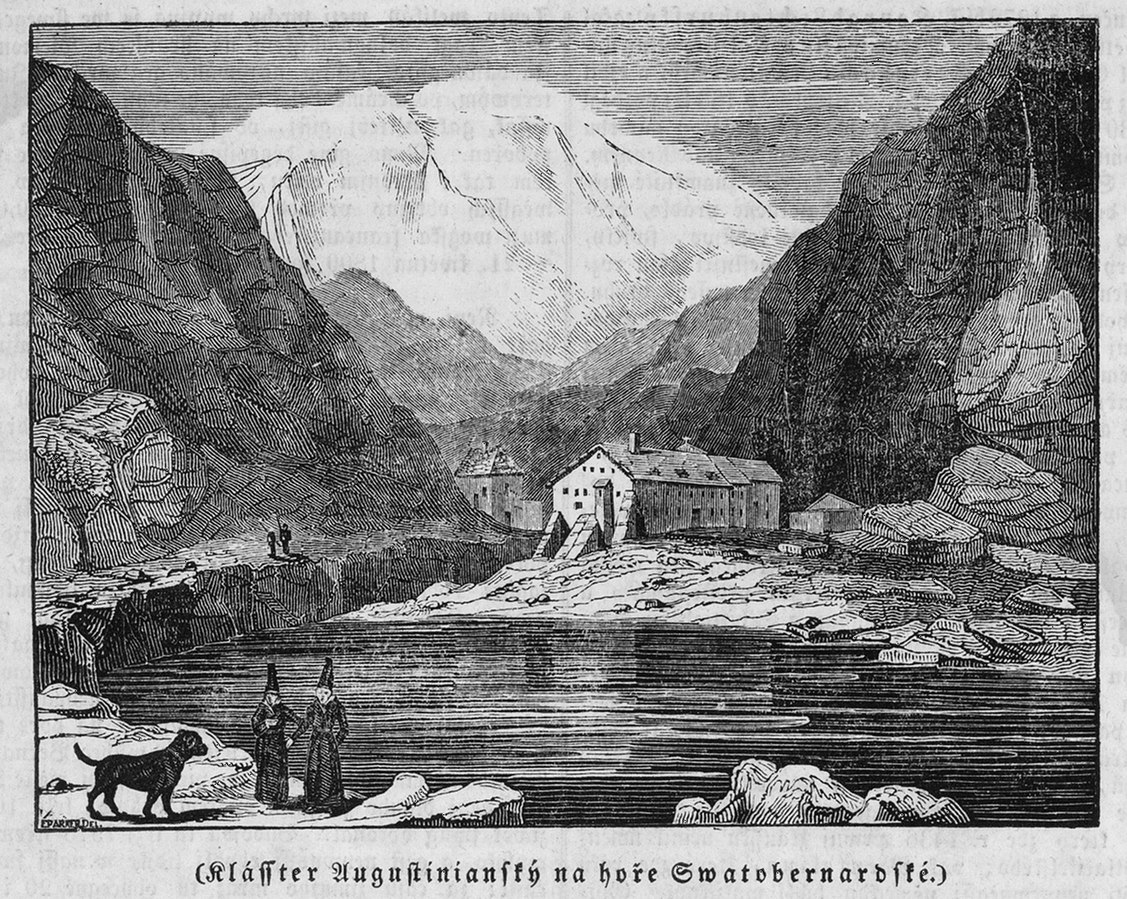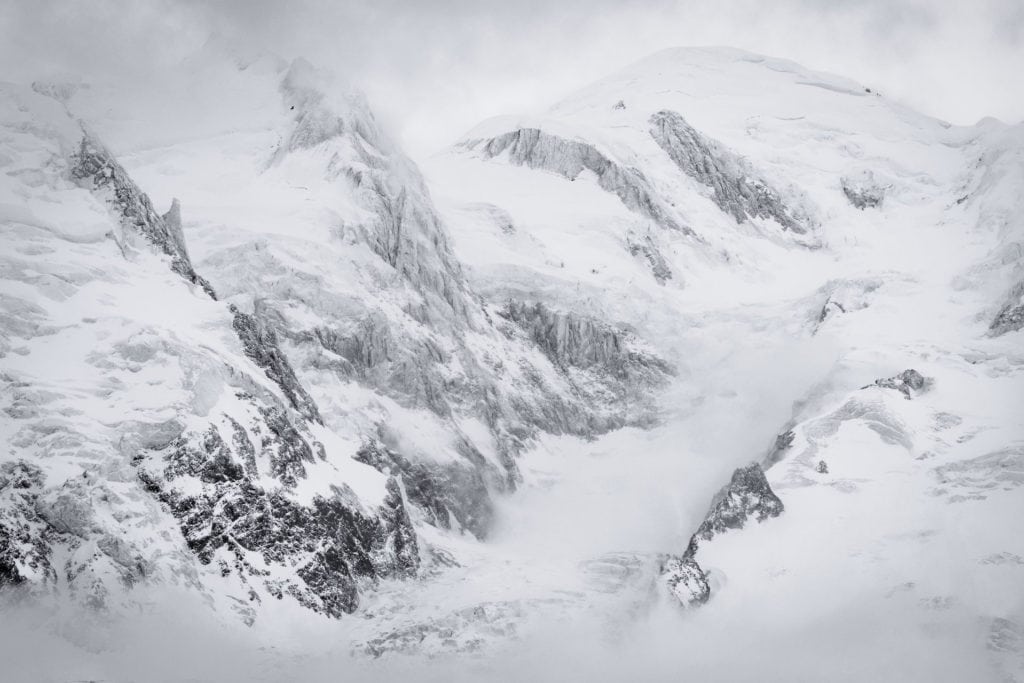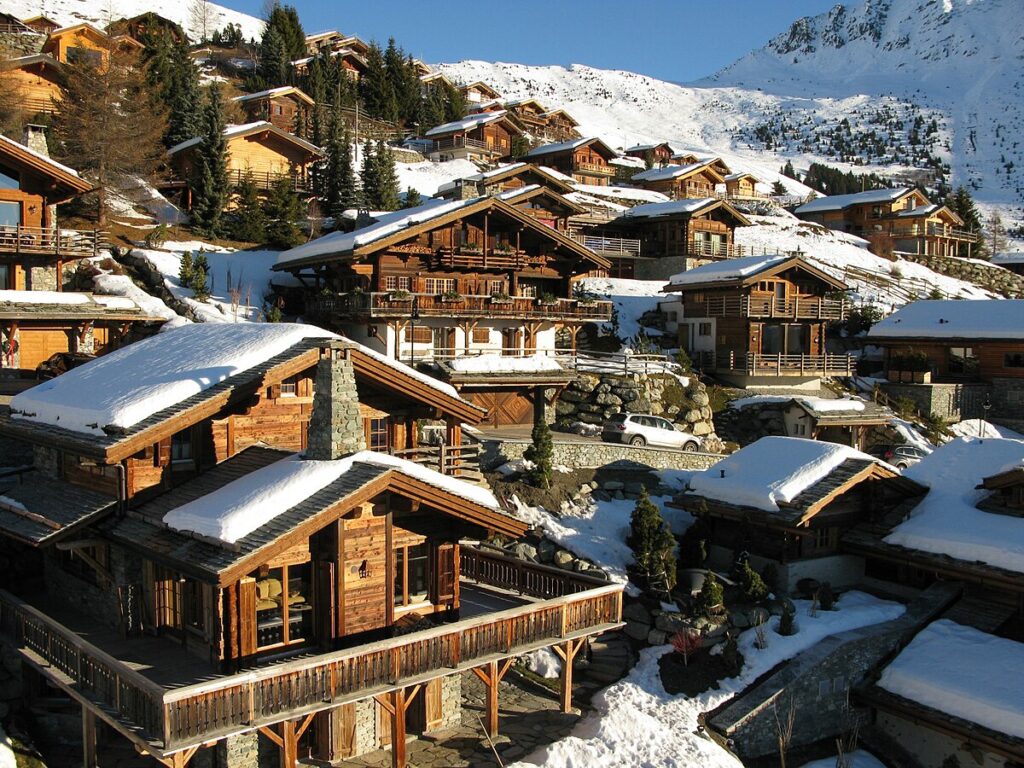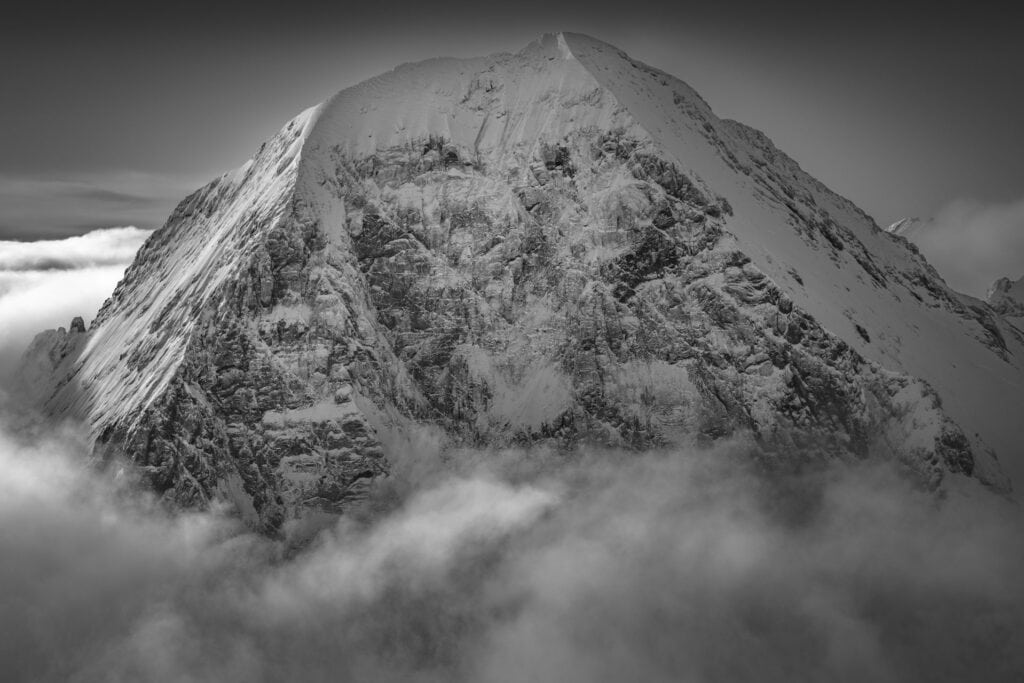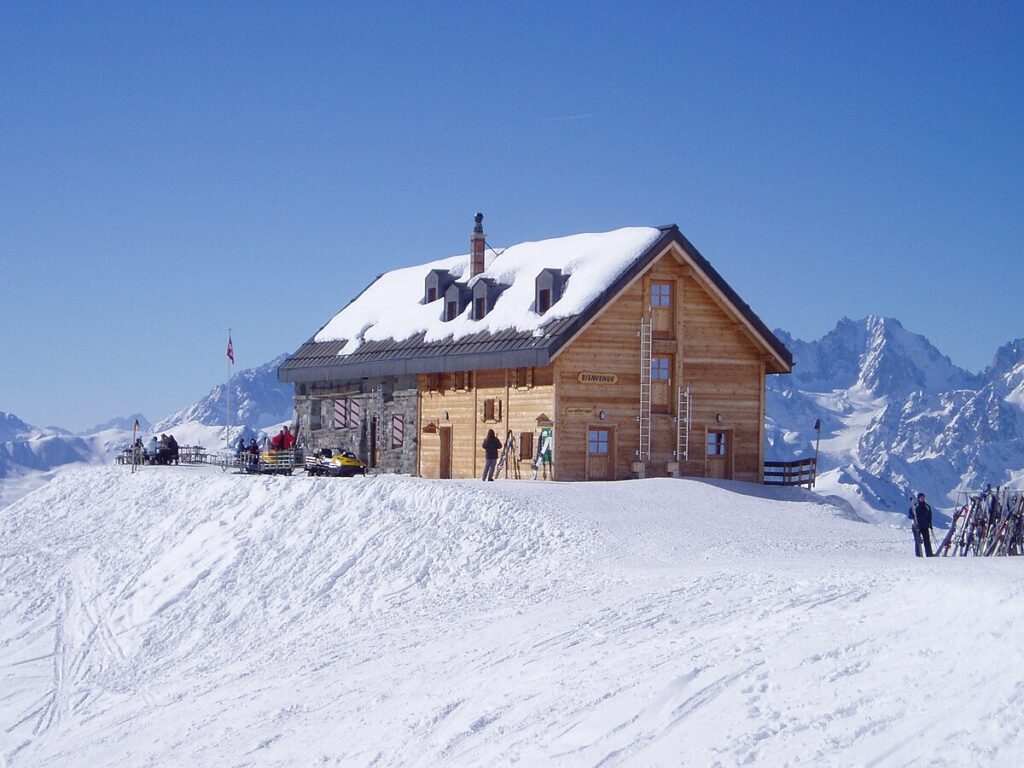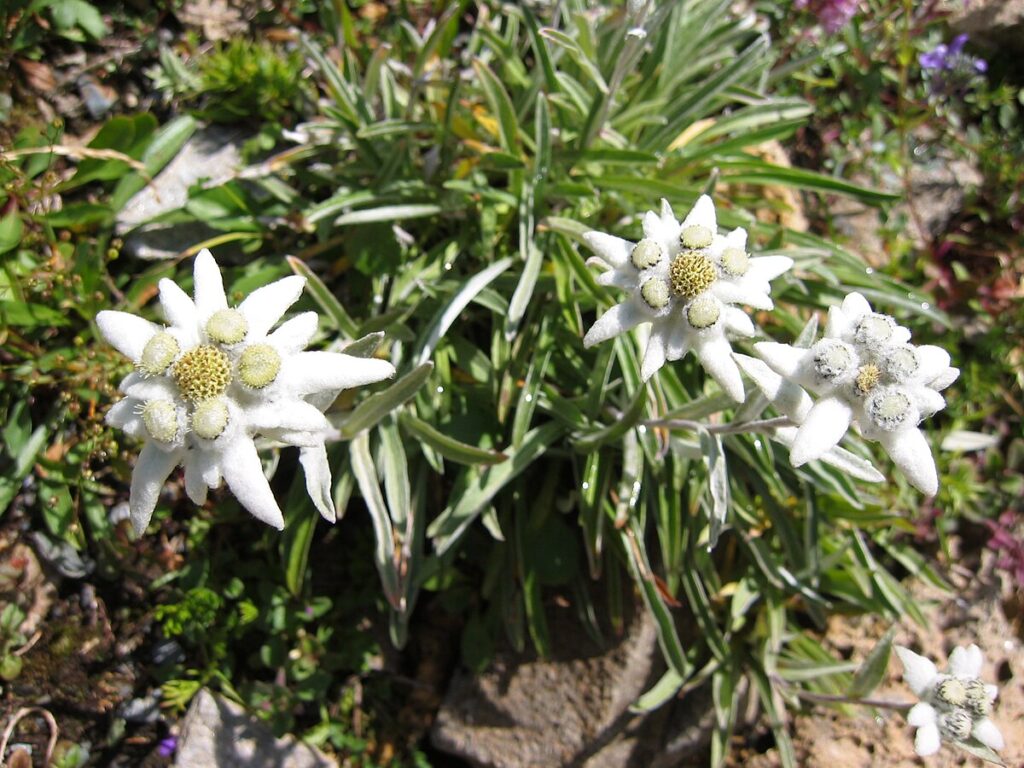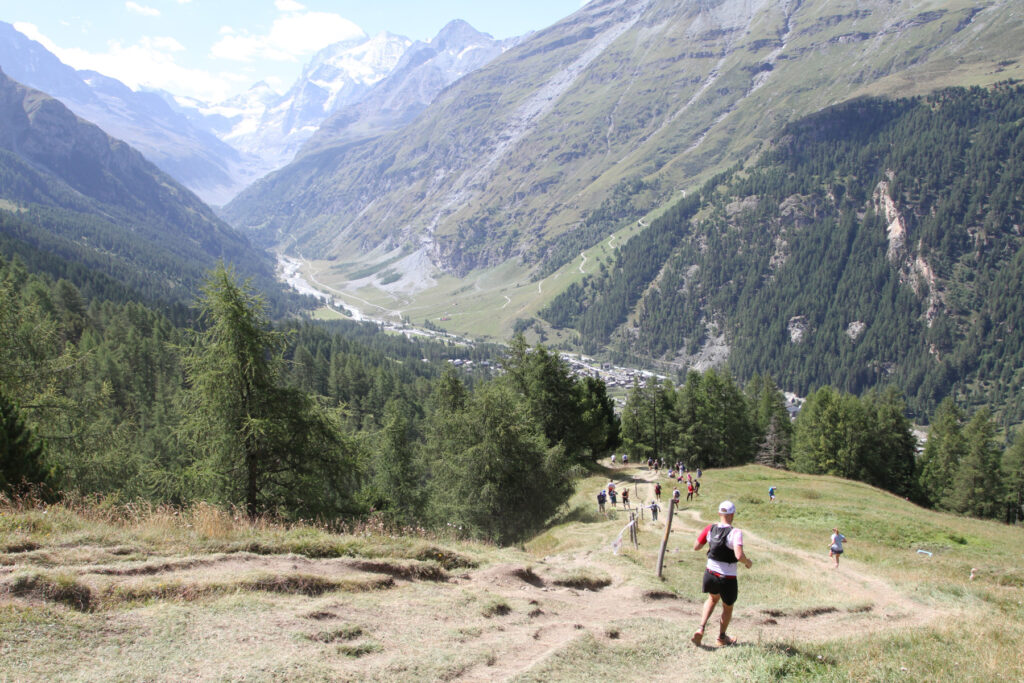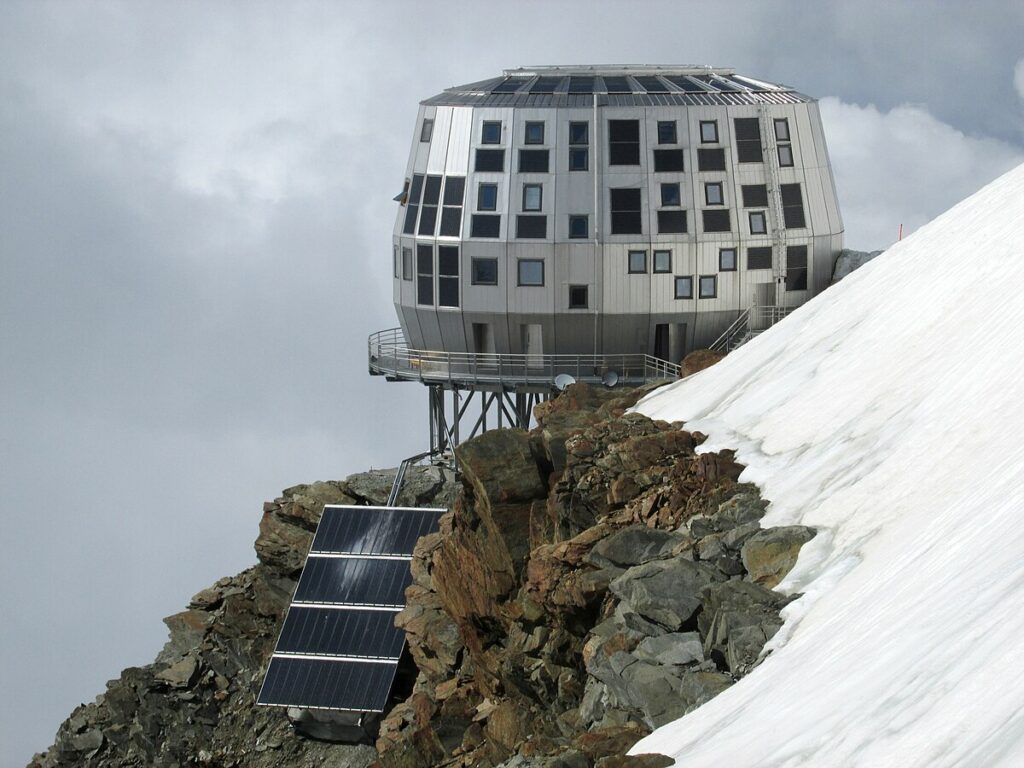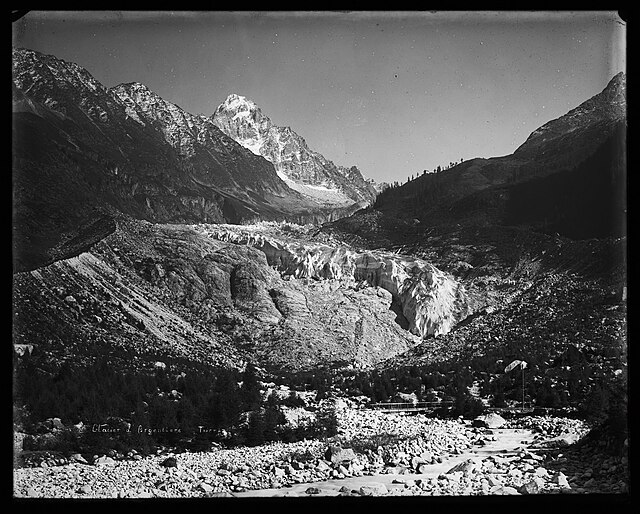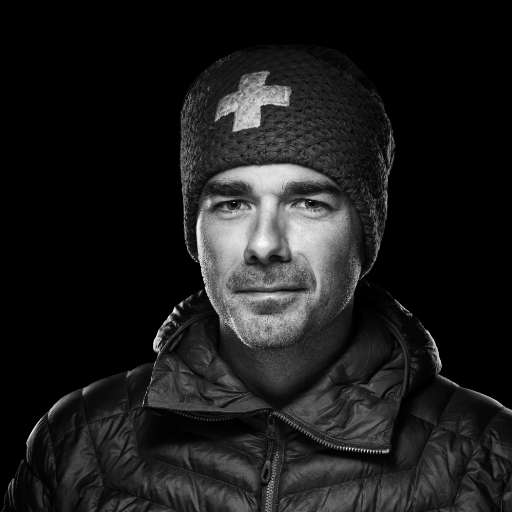The highest point on the famous Via Francigena pilgrimage route, the Great St. Bernard Pass has been welcoming travellers for over a thousand years. On the border between Switzerland and Italy, it links the Entremont valley to the Aosta Valley at an altitude of 2,469m. But more than just a passageway, it's a sacred path dedicated to the beauties of the world and to meditation. For it is home to the Hospice du Grand-Saint-Bernard. A place of prayer at summit the Valais Alps. An inescapable stopover on the path taken by the faithful across Europe. Today, I share its glorious history with you.
The Via Francigena pilgrimage: A sacred route across Europe
The Via Francigena, or Francigenous Way, links Canterbury to Rome across the Alps. Along with the roads to Jerusalem and Compostela, it is one of the most famous Christian pilgrimages. Its history dates back to 990, when Sigeric of Canterbury, then Archbishop of Canterbury, first defined the route. He decided to walk to Rome, where he was expected by Pope John XV. And to keep track of this incredible journey across Europe, he described each stage in a notebook, which he published on his return. 79 stages in all, which have since become an exceptional pilgrimage route.
The flow of pilgrims along the Via Francigena reached its peak in 1300, when the Pope announced that he would grant a plenary indulgence to all Christians making the pilgrimage to Rome. Thousands of people in search of absolution took to the sacred route. But the Via Francigena soon became much more than just a pilgrimage route: it became a major axis of communication between northern and southern Europe. Merchants and soldiers alike passed through the Great St Bernard Pass on their way across the Alps.
Thanks to this trade route, a new era opened up in Europe. The considerable increase in traffic reshuffled the economic deck. The Alps were no longer an obstacle to trade, and transporting goods was made easier. Fabrics produced in Northern Europe began to cross paths with spices and silk from the Orient. By the 13th century, demand was so strong that new routes were opened across the Alps, consigning the unique Via Francegina to the past. It could be said that all roads led to Rome. Nevertheless, this historic route retains its place in the hearts of the faithful. And the Great St Bernard Pass remains its crowning glory.
The Great St Bernard Pass: the origins of a strategic route

The Grand-Saint-Bernard pass overlooks the commune of Bourg-Saint-Pierre, in the Entremont valley. It is one of the highest road passes in the Swiss Alps. A well-known passageway between Switzerland and Italy, the pass has been crossed by man since prehistoric times. The first inhabitants of the Valais crossed it to obtain stone from the Aosta Valley. Since then, people have continued to use this route as a gift from the gods to conquer the mountains.
In Antiquity, the Romans took over this heaven-fallen path. They built a road, the ruins of which can still be seen today. The advent of a world where men tamed the wilderness for their own greater glory. They also built a temple dedicated to Jupiter, ruler of heaven and earth. The Grand-Saint-Bernard pass then became the Mont-Joux pass, jovis meaning Jupiter in Latin. This strategic axis in the heart of the Alps remained an important military and trade route throughout the Middle Ages.
L'hospice du Grand-Saint-Bernard: A heavenly shelter
Over the centuries, travelers, soldiers, merchants and pilgrims have crossed the Great St Bernard Pass out of necessity rather than pleasure. Looters were plentiful and danger was ever-present. So, in the 9th century, the first monastery was built below the pass, at Bourg-Saint-Pierre. Travelers could take refuge there for the night or for a few hours. But their respite was short-lived. Around 940, the Saracens destroyed this first hospice. The mountain then lived through dark times, until the hand of God once again illuminated its rugged peaks.
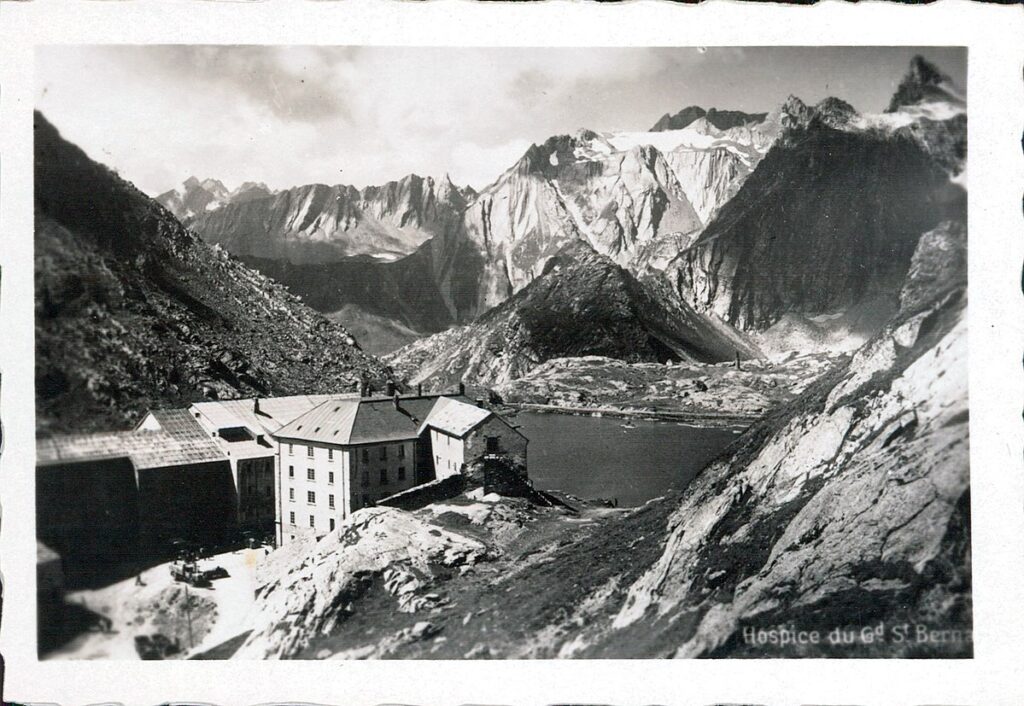
Bernard d'Aoste, or de Menthon, archdeacon of Aosta Cathedral, welcomes broken men every day. Exhausted from the snow and icy winds. Robbed of their possessions by hordes of bandits. Afraid to continue their journey in these conditions. They ask him for asylum, begging him with their eyes to come to their aid. The man of the cloth could stand the misery no longer, and decided to take action to keep the travelers out of harm's way. He gets the bishop to free the pass from banditry.
Then, around 1050, he founded a hospice on the summit Mont-Joux and placed it under the protection of Nicolas de Myre, patron saint of merchants. The historic route linking the Valais to the Aosta Valley was no longer a haunt for birds of prey, but a place of rest and contemplation. A century later, a church was built in the hospice. Still dedicated to Saint-Nicolas, it became the highest church in Europe.
As for Bernard d'Aoste, you know him by his saintly name. Canonized in 1861, Saint-Bernard became the patron saint of mountaineers, alpinists and alpine hunters. As a tribute to his goodness of heart and greatness of soul, the Mont-Joux pass and its famous hospice now bear his name.
The Great St Bernard Hospice: power at the summit the Alps
The Hospice du Grand-Saint-Bernard fulfills its mission of hospitality and prayer thanks to the generosity of numerous donors. Placed under the jurisdiction of the Bishop of Sion, the Grand-Saint-Bernard pass on which it stands also became part of Switzerland. For the hospice, much more than a sacred refuge, gradually became a power issue. The House of Savoy eventually imposed its guardianship on the canons, who fought hard and persevered until 1752, when they won their sovereignty.
In 1800, the congregation of the Canons Regular of the Great St. Bernard opened the doors of their hospice to Bonaparte and his army of 40,000 men. Impressed by such a warm welcome at the summit the Alps, the future emperor ordered the foundation of a similar hospice on the Simplon Pass. Deeply affected by General Desaix's death in battle, Bonaparte also decided to entrust his friend's body to the hospice and its patron saint. He had his tomb built in the chapel of the Hospitaliers du Grand-Saint-Bernard, where the general was buried in 1805.
L'hospice du Grand-Saint-Bernard: A time for modernity
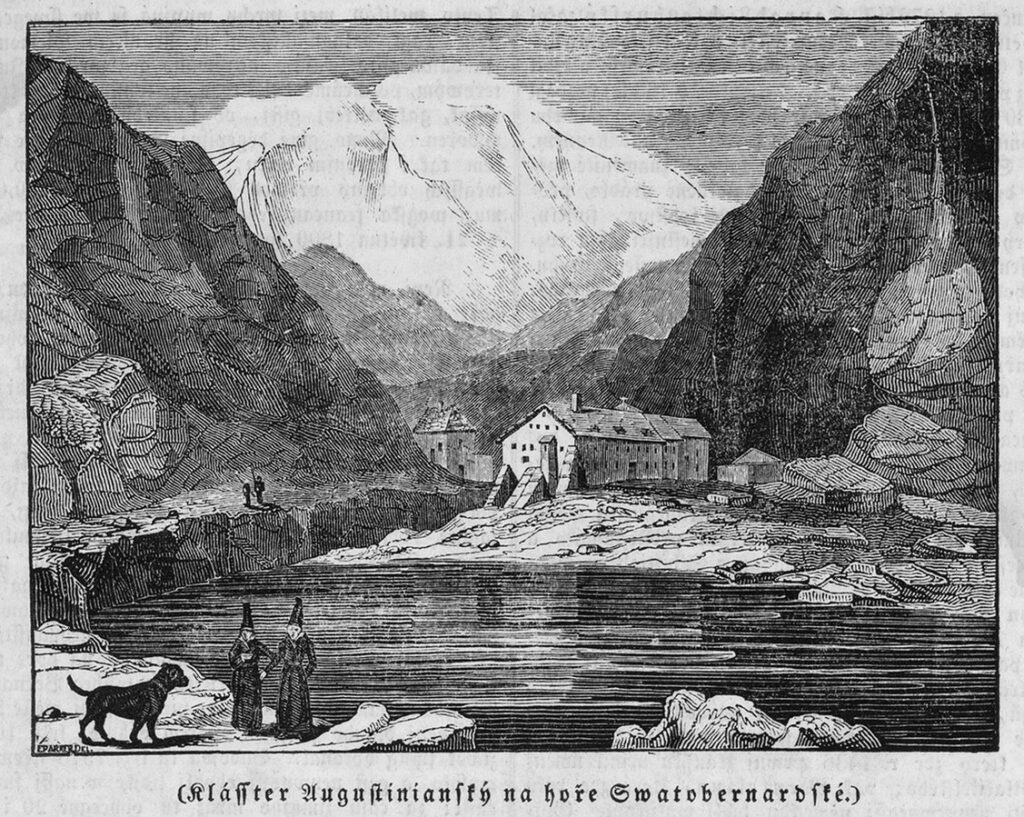
The hospice welcomes an ever-increasing number of pilgrims and travellers passing through the Great St Bernard Pass. Far from the hustle and bustle of the world and in communion with nature, the canons offer their visitors a moment suspended in the depths of the mountains. But man is busy dominating his environment. He domesticated, invented and forged the tools of his conquest. In 1893, a road was opened on the Valais flank, inviting tourists to reach the Grand-Saint-Bernard pass by car. By 1905, the carriageway had crossed the pass, linking Switzerland to Italy. To cope with the influx of visitors, the hospice expanded. In 1925, the new wing opposite the original building became a hotel during the summer months. The pass road is only passable when the snow has disappeared.
The Great St Bernard Pass has changed a great deal since man first set foot on it. Yet its revolution was only just beginning. In 1964, its destiny changed. The Great St Bernard road tunnel was inaugurated. A tunnel more than 5 km long was dug under the mountain to allow European Route 27 to cross the pass in all seasons. The transalpine link suddenly puts the Great St Bernard Hospice out of sight. It's like an unexpected return to its origins, when only the mountain and the infinite sky inspired the canons' most beautiful prayers.
So what was to be done? Fly away from the pass, or become even more deeply rooted in it? Did the presence of a hospice on the Great St. Bernard still make sense when everything pointed to its abandonment? Was it really going to be forgotten because of the bypass? At a crossroads, the congregation decided to believe. To believe in the power of the mountain, in man's need to recharge his batteries. Visitors might be fewer, but their fervor would be all the greater. The canons are sure of it: the high mountains invite quietude, meditation and serenity. To rise up in the heart of wild and marvellous nature, the better to find oneself and cherish life.
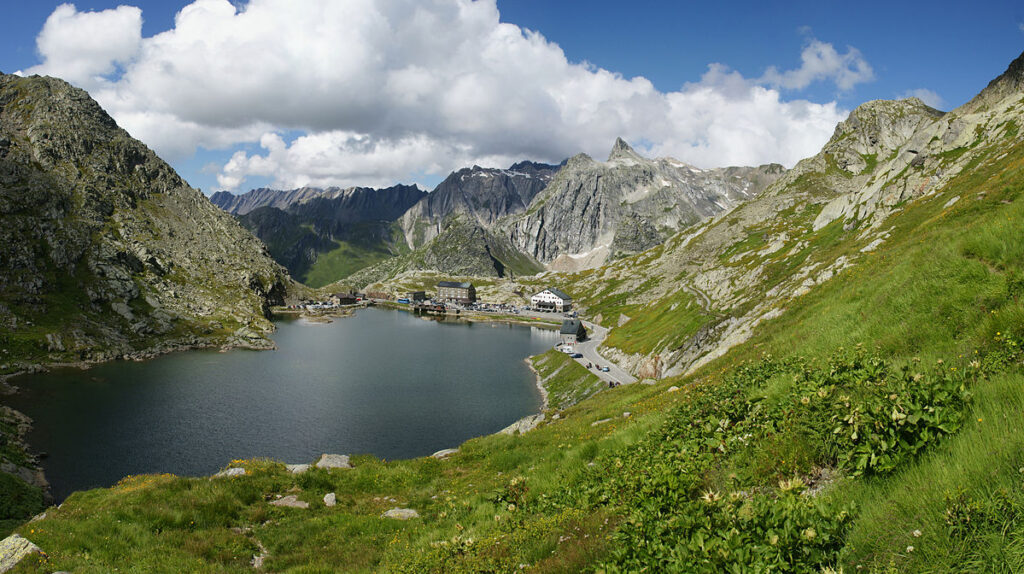
The Great St Bernard Pass: A legendary stage in the Swiss Alps
The congregation of the Canons Regular of the Great St. Bernard has risen to the challenge with flying colors. By offering the hospice a new path to spirituality, they have reinvented man's link with nature and the high mountains. In search of meaning and a new lease of life, travelers take the historic route to the pass. In summer by car, in winter on snowshoes or cross-country skis. There's no stopping them, as the path nourishes and quenches an immense thirst. Of splendor, peace and divine grace.
The rediscovery of the Via Francigena by hikers contributed to the growth of the hospice. In 1994, the Council of Europe recognized this pilgrimage route as a major cultural itinerary. Reaching the Great St. Bernard Pass is the culmination of a unique adventure. Taking the route that so many others before them have travelled. It's like going back to basics. Pilgrims or walkers, believers or lay people, all walking together across Europe. Rooted in nature, alive and prodigious, rubbing shoulders with the sky and, in the dawning dawn, seeing a horizon emerge. That of a generous, frugal life, where heart and mind are united with the earth, never giving in to foolish pride or compromise. On the road to the Great St Bernard Pass, and through the windows of his hospice, nature witnesses the metamorphosis of men who dare to make the journey of a lifetime.
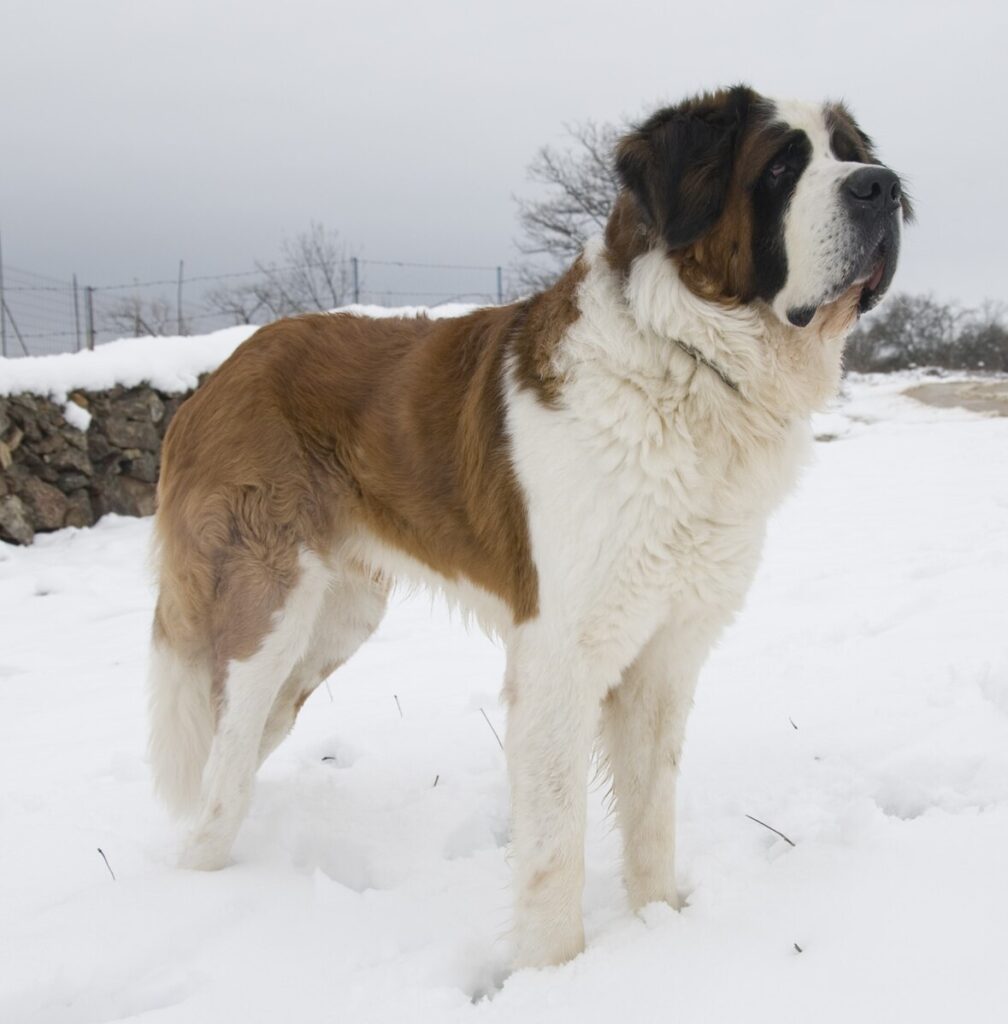
The history of this sacred high-mountain route inspires me to climb it. The Great St. Bernard Pass and its hospice remain a must-see in the Swiss and Italian Alps. If you'd like to visit one day, you can be sure that the canons up there are not alone in looking after their guests. Have I told you about the illustrious Barry, our four-legged hero? In the 19th century, this Saint Bernard, who lived at the hospice, is said to have saved the lives of over 40 people. These dogs, which have since become the emblem of Switzerland, owe their fame to the hospice du Grand-Saint-Bernard. Known since the 17th century, their breeding enabled the canons to ensure their own protection. Mountain dogs then began to watch over visitors. They come to their rescue when they are lost. Since 2005, the congregation has entrusted the breeding of Saint Bernards to the Barry Foundation. But if you cross the pass in summer, you'll see them without a shadow of a doubt.
